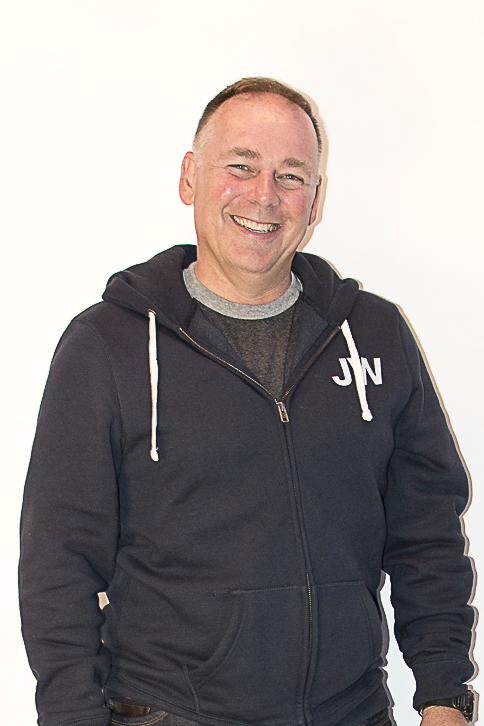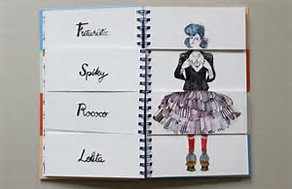Cindy Sherman has been the master of disguise for quite some time, herself portraits often use make-up and props to present an alter-ego of sorts. Her images range from clowns to Stepford wives, apparently Cindy Sherman used dressing up as a form of escapism when she was younger , she went on to catalogue this process and use it to explore the realms of identity.
Most recently Cindy Sherman has taken to Instagram and has been posting ‘selfies’ designed I believe to mimic and ridicule the selfie taking society that now exists. She proves that we are never truly as we seem and that the images we post are not of our ‘true selves’. So then what is a selfie if it is not a true representation of our self, does the name merely allude to the fact that we take it ourselves.
Cindy Sherman’s Instagram account can be viewed here:
https://www.instagram.com/_cindysherman_/ (Accessed 17.09.17)
Her ‘self portrait’ images are warped beyond what looks realistic, some are doll-like, some are grotesque , they are caricatures.
Claude Cahun
Was Claude the inspiration for Cindy Sherman? Claude took photos of herself in various guises and positions. Her photos seem political and focus on gender. Her name itself can be considered male or female and many of her images leave you wondering on her gender. She was original born and named Lucy but used Claude as her name as well as Daniel. Claude also wrote and during WW2 became an ‘activist’, she was arrested and sentenced to death although this sentence was annulled.
Her work can be seen here:
http://www.connectotel.com/cahun/ (Accessed 20.09.17)
Vivian Maier
I love Maier’s self portraits, they remind me of my shadow images I am starting to collect although I might start looking more at reflections. Her photography did not come to light until late in her life, she worked as a nanny but had amassed a huge portfolio of work including self portraits mostly taken by reflections. Using mirrors, shop windows and shadows she has a range of images in both monochrome and colour.
Her work can be seen here:
http://www.vivianmaier.com/gallery/self-portraits/ (Accessed 20.09.17)
Hobbes Ginsburg
It is difficult to find much about Hobbes Ginsburg other than her photographs, but she has an interesting series of ‘selfies’ or self portraits which explore gender, as well as anxiety and depression. In an article with I.D with Dean Kissick in 2015 she say:
I think it’s an outlet for taking a lot of the negativity that I feel at times and making something more positive and more pretty out of it. When you’re feeling really depressed, not doing anything – empty – you can take that feeling and make this thing out of it, using yourself as an important icon in the photo, and making something that’s very pleasing to the eye, and it becomes a moment to release that energy into something better.
So I think there’s probably a lot of internalized misogyny when it comes to thinking about things in that way. And I think it’s a lot of misplaced negativity in terms of what taking selfies is because everyone else has always been that, sort of, self-centred and narcissistic; people have painted self-portraits, and that took hours and hours and hours. People have always been recreating their own image, it’s just that now it’s become more readily accessible and it’s not only elite white dudes who can create images of themselves
Her work can be seen here:
http://hhobbess.tumblr.com/ (Accessed 20.09.17)
Iiu Susiraja
Iiu is a photographer from Finland whose collection of self portraits appears to say that abnormal is normal! There is a humour to her photographs and a brutal honesty. In an article for Dazed she says:
What do you want people to feel when they see your work?
iiu Susiraja: To feel freedom to perform how they want to in their own self-portrait. And the best part is if the viewer has conflicting thoughts with my art.
Boredpanda.com writes “Some of us use selfies as a vain form of self-expression, trying to make ourselves look richer, happier or more beautiful than we really are. Iiu Susiraja, however, turns this concept of the selfie on its head by taking brutally honest, surreal and unflinchingly funny self-portraits using her own body and other objects as props.
There is a warm humour to the images, in one she holds a broomstick under her breasts, this image made me recall the pencil test. In secondary school I remember reading an article in a teen magazine that suggested the way to know if you had pert breasts was to put a pencil underneath. If the pencil dropped out your breasts were pert if it stayed then they were supposedly saggy! I failed the pencil test but I think with age and wisdom it was because they were larger, they are still not was I would consider saggy. How impressionable magazines can be to a young girl!
Her work can be seen here:
http://www.iiususiraja.com/portfolio/valokuvat/ (Accessed 20.09.17)
Jo Spence
Jo Spence’s work fascinates me, the later part of her career was spent photographing her breast cancer and treatment which has resulted in very emotive self portraits. They are open and honest, showing her scars and vulnerability. She apparently looked to Chinese medicine rather than the usual radiotherapy and chemotherapy but did in fact beat the cancer. Sadly she died of Leukaemia in 1992 after overcoming her cancer. But I am also interested in her work entitled ‘ Beyond the family album’ which seems to explore how though the family album she was perceived and how it informed her as a person. I would like to look at this work in more detail.
Her work can be seen here:
http://www.jospence.org/ (Accessed 20.09.17)
It may be coincidence but I have noticed that all of the above although sometimes exploring gender are woman, even Francesca Woodman is known for her self portraiture but I cannot think of a male photographer? Are woman more open, exploratory or narcissistic?
















